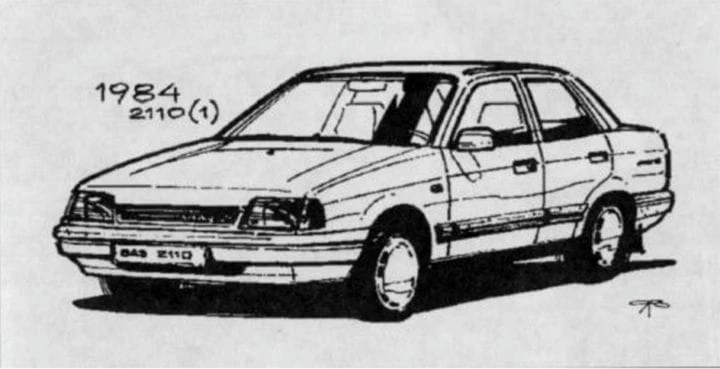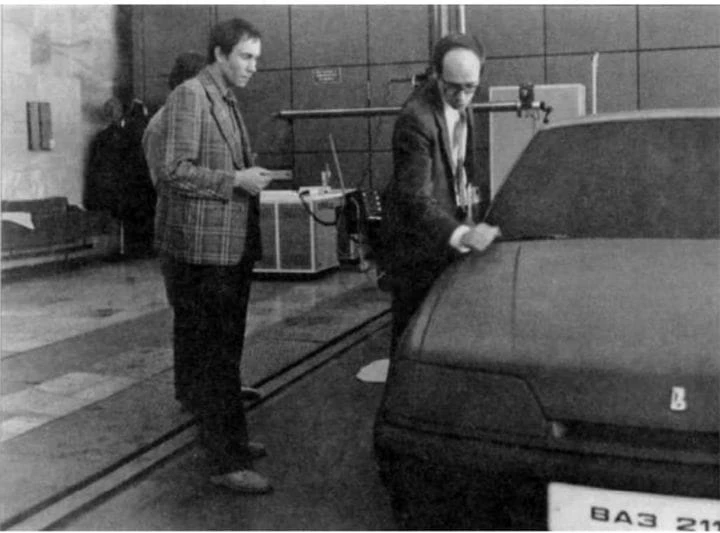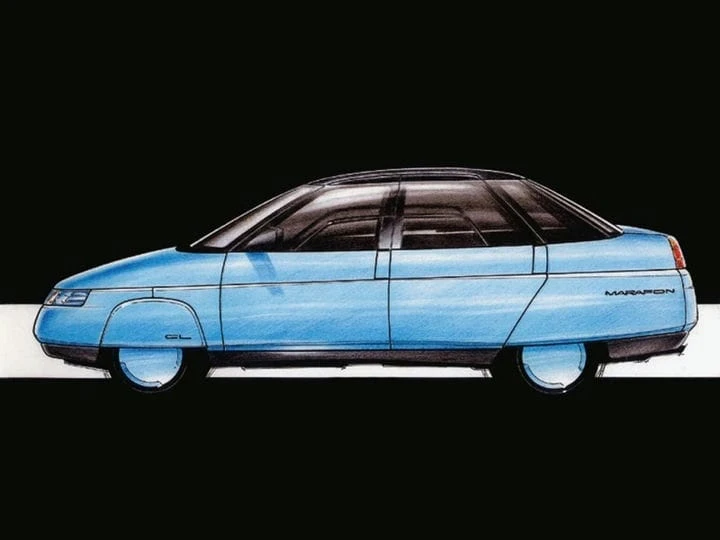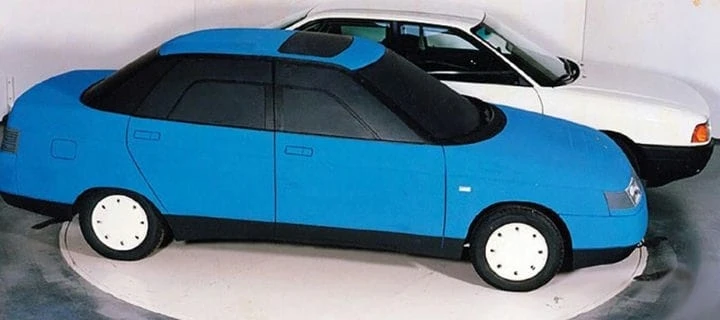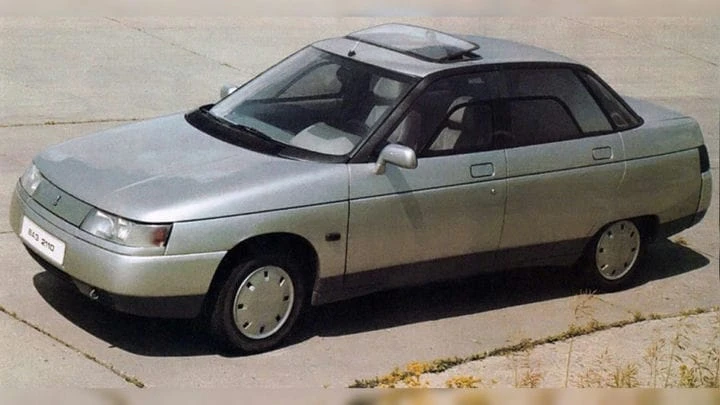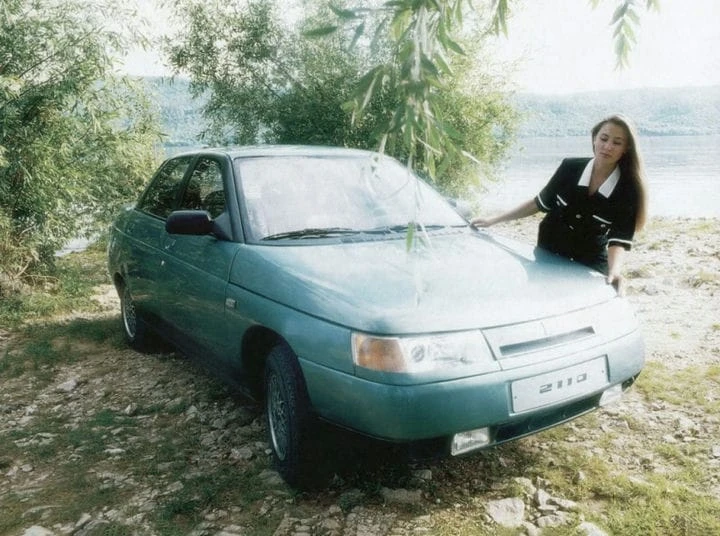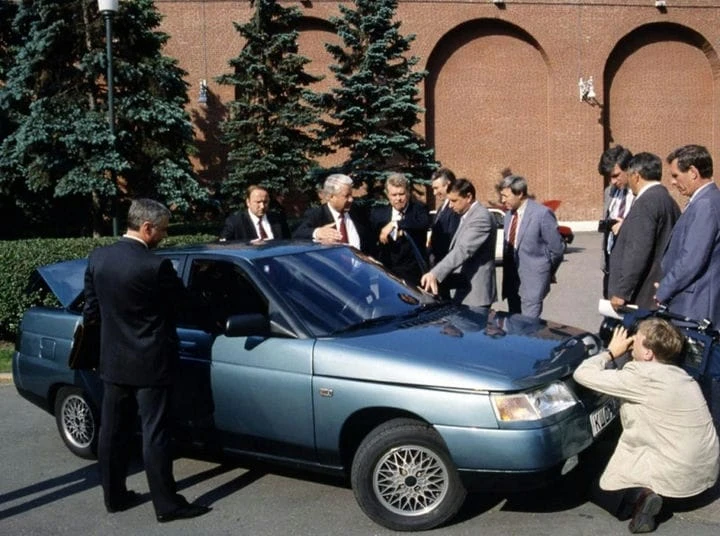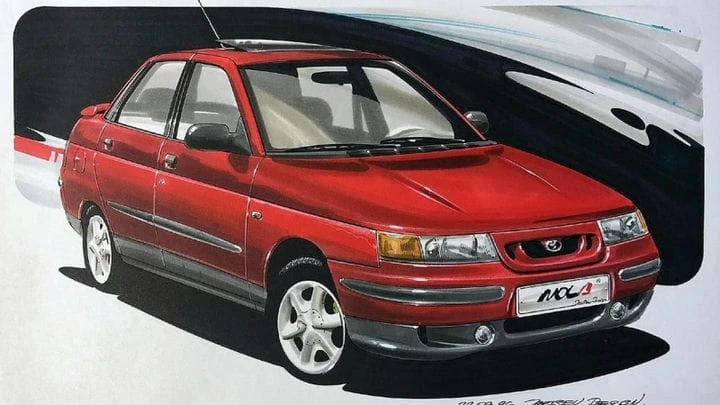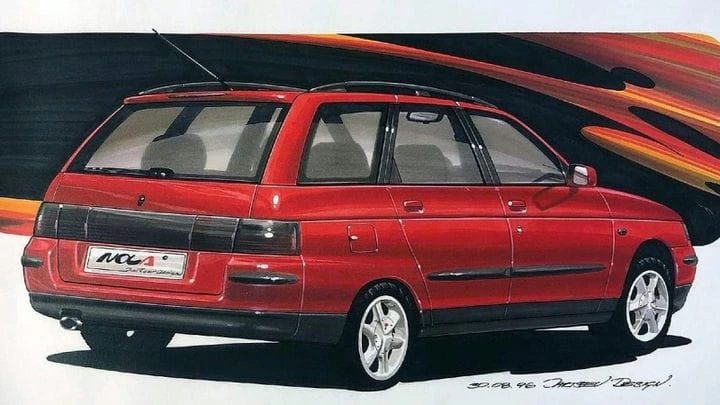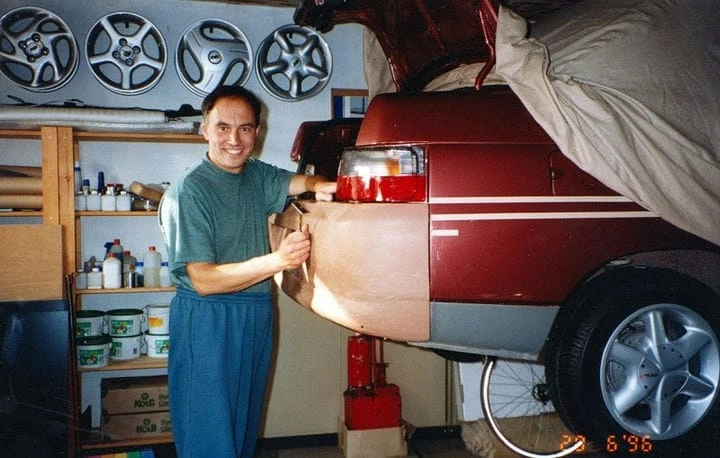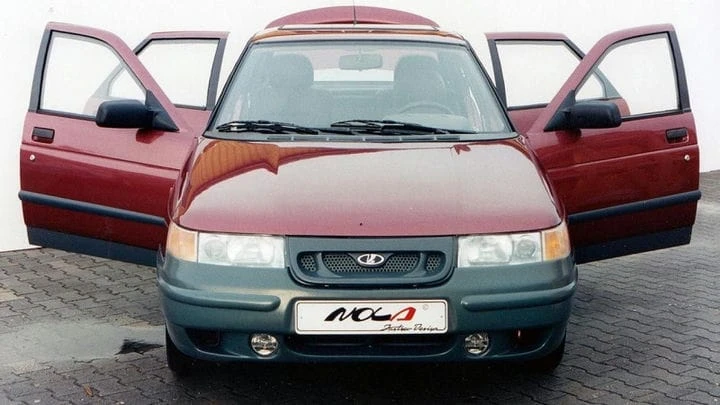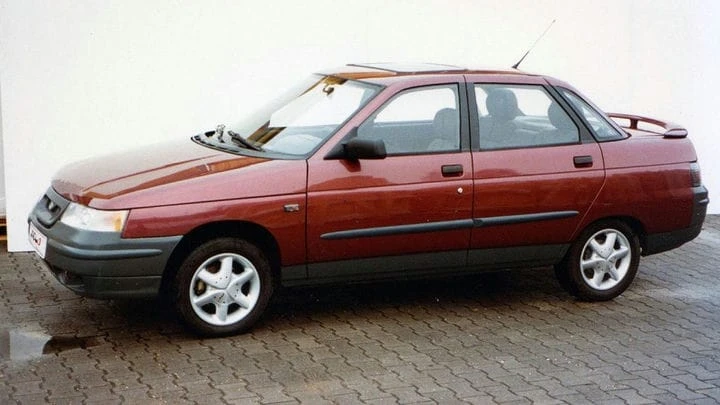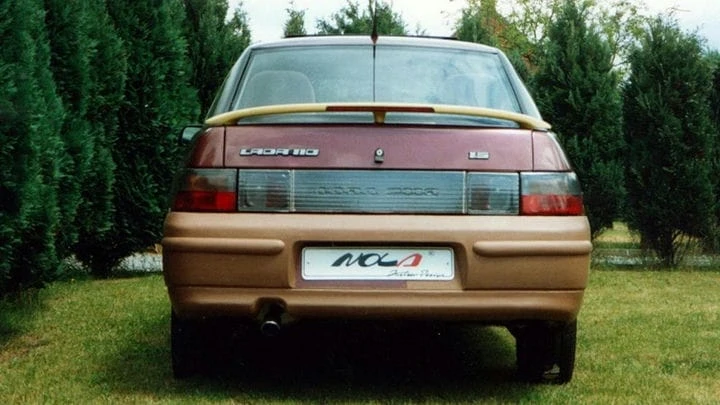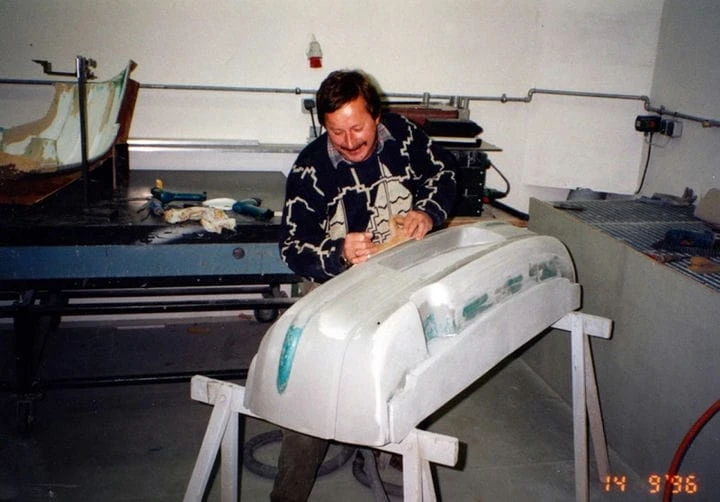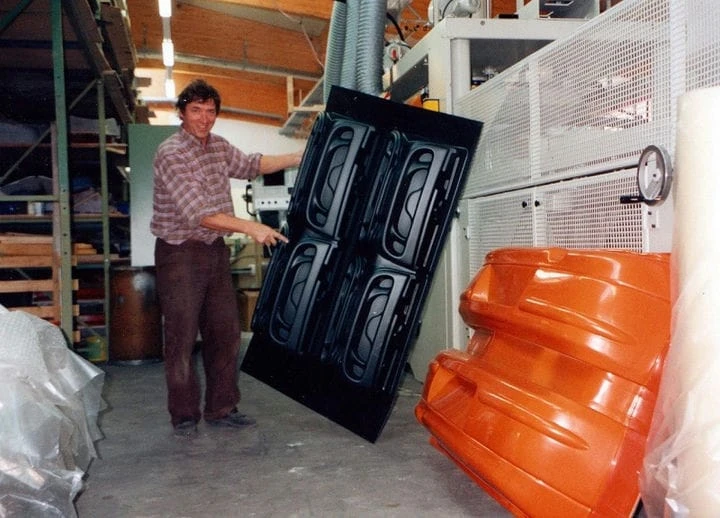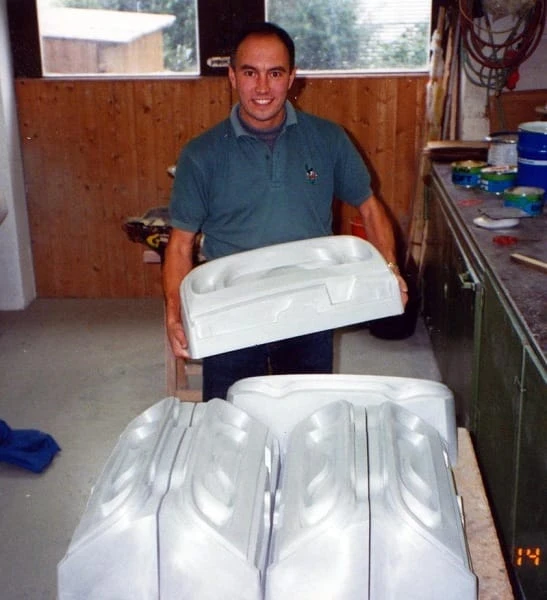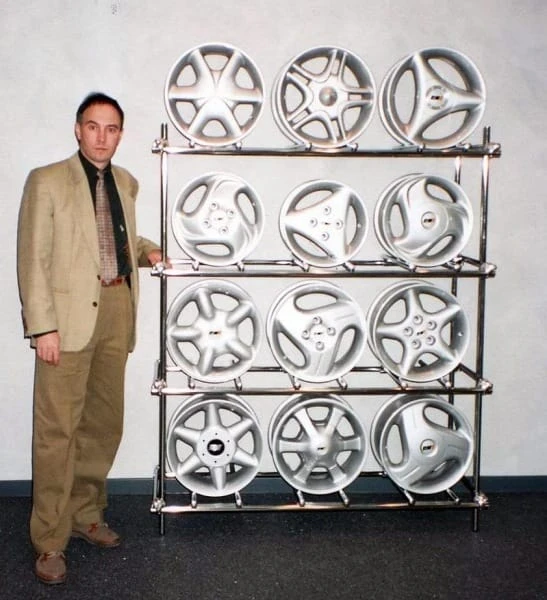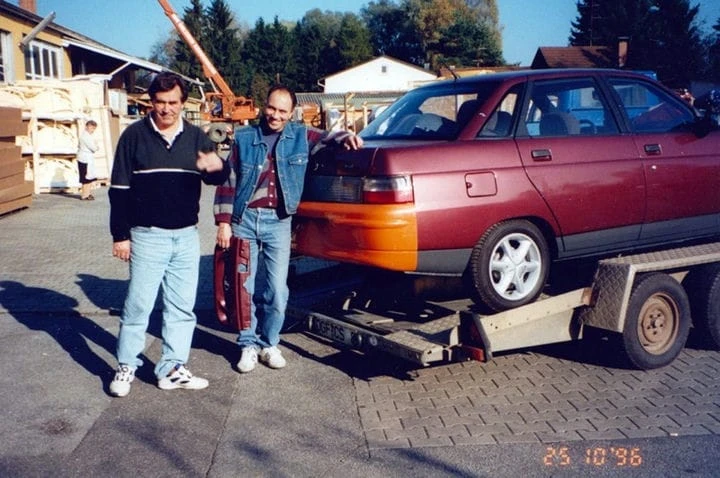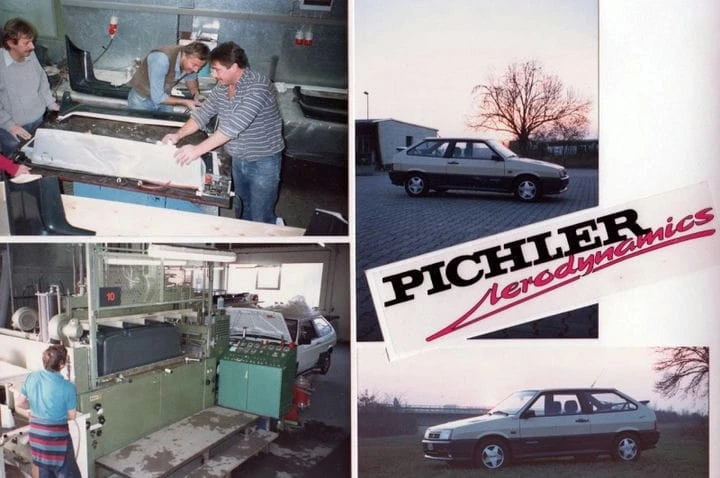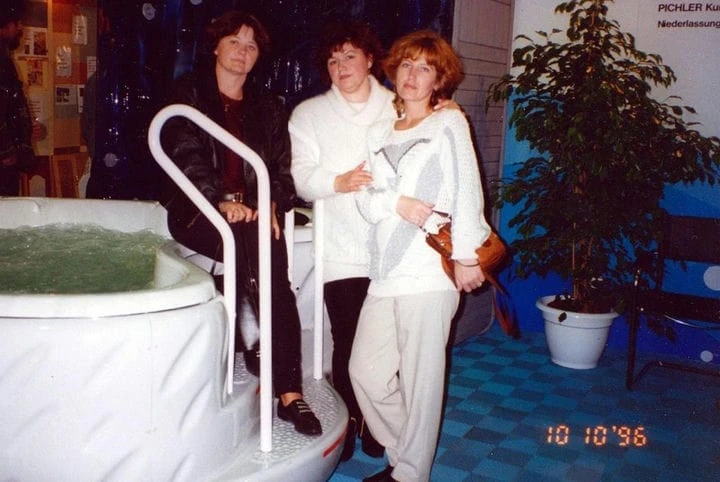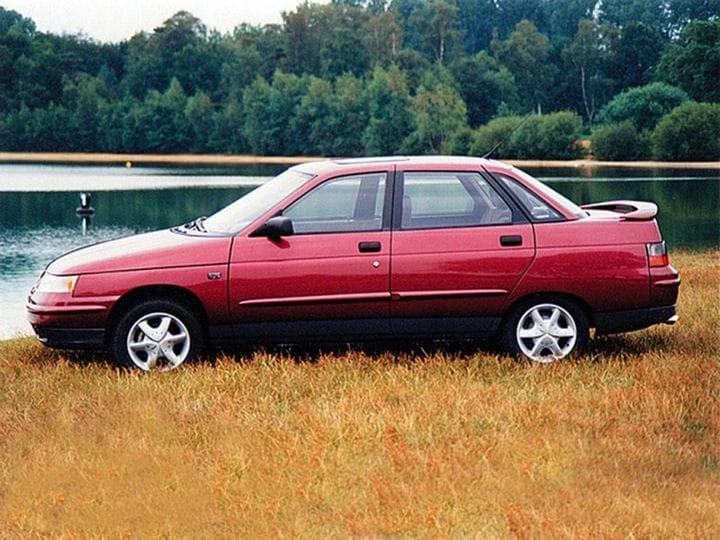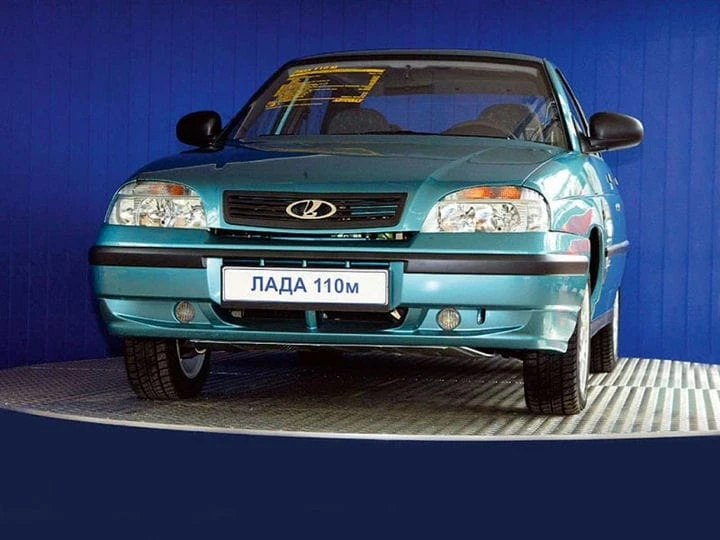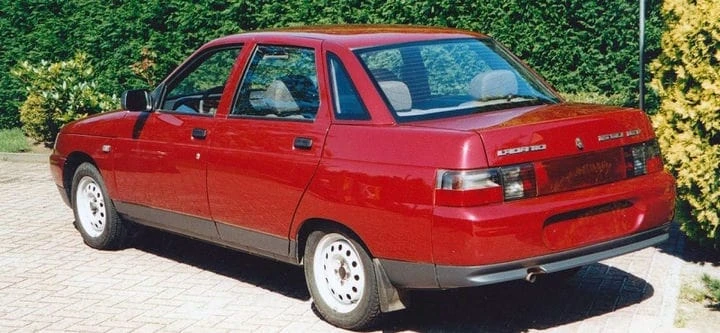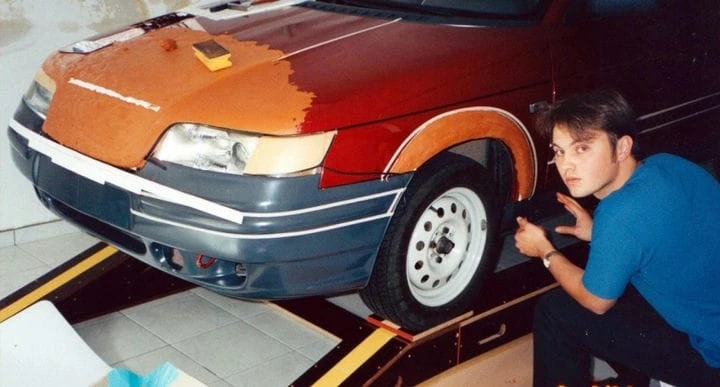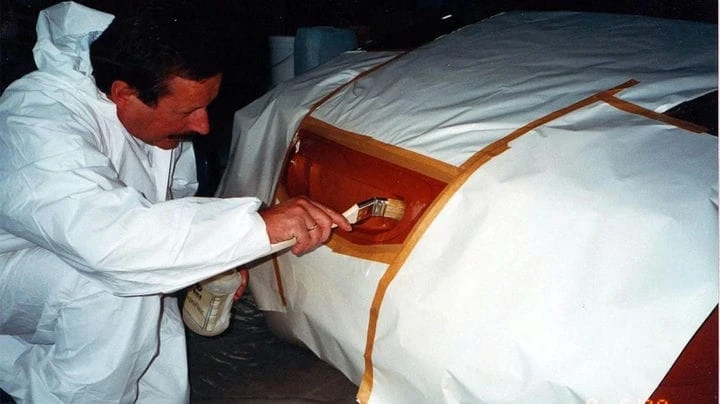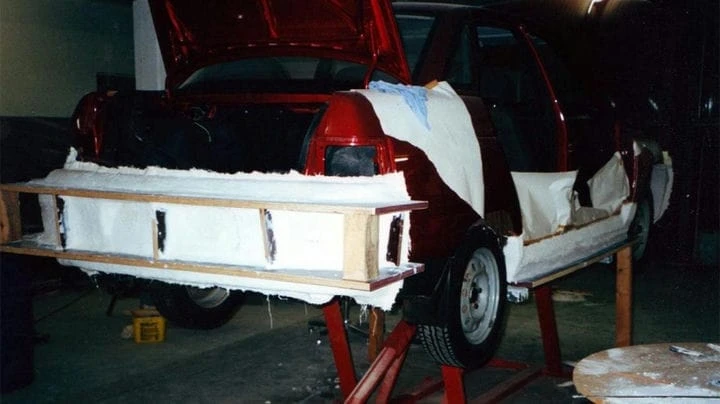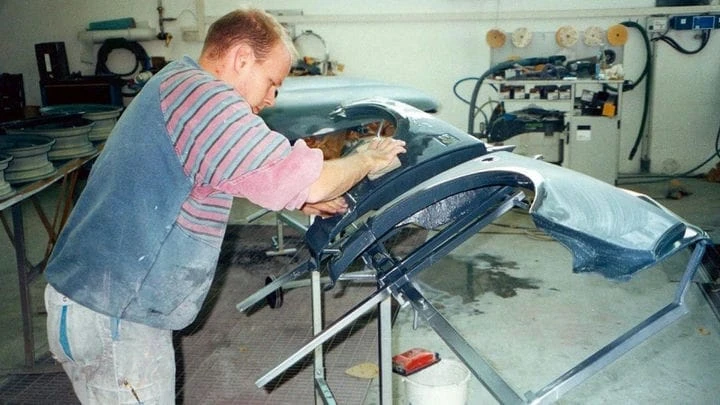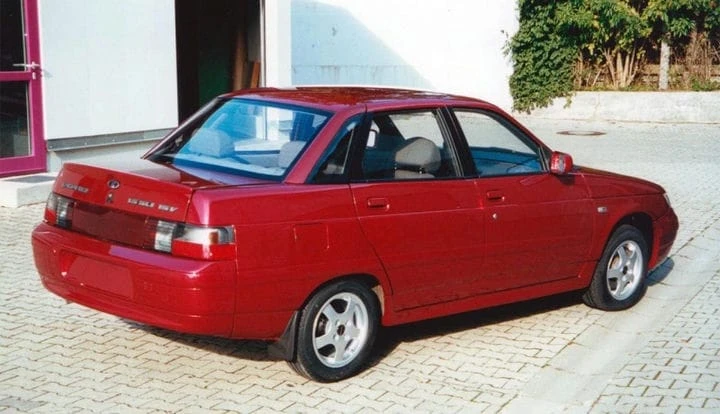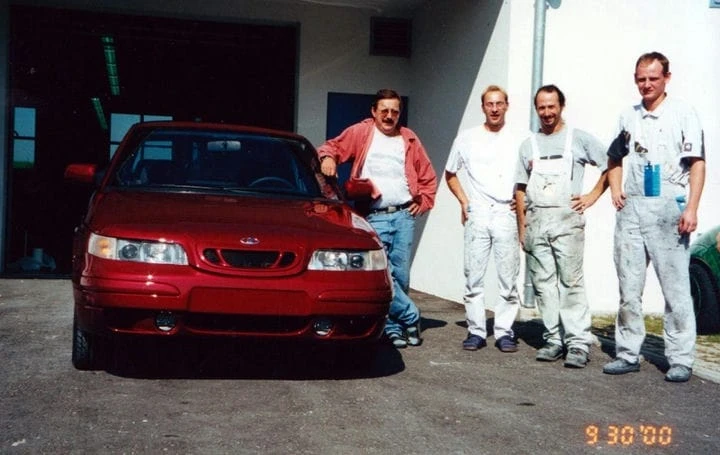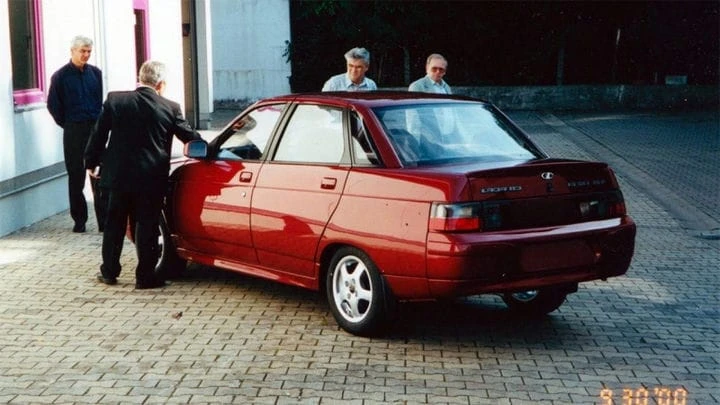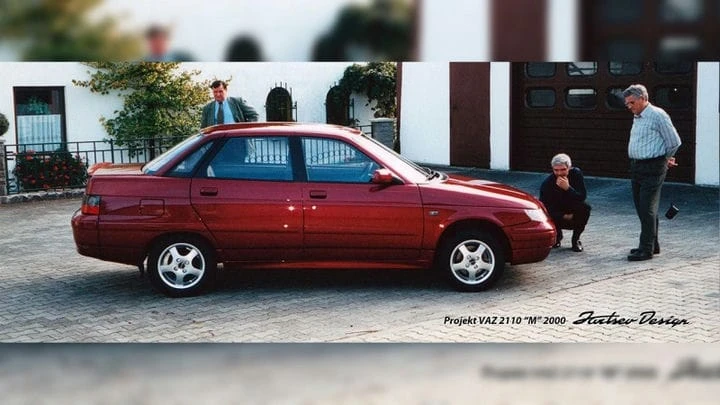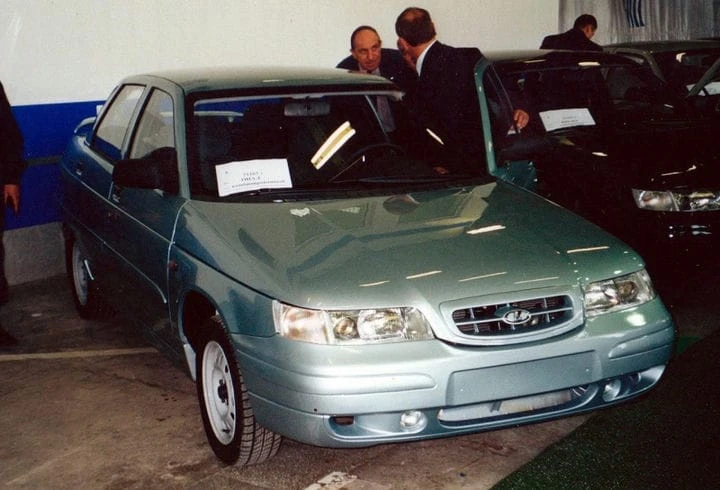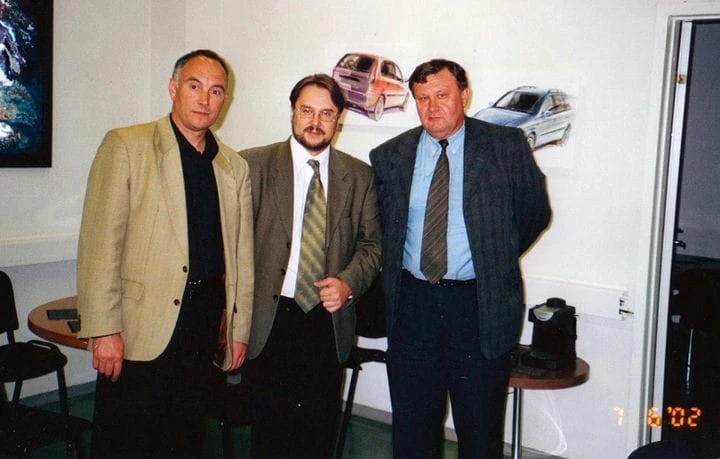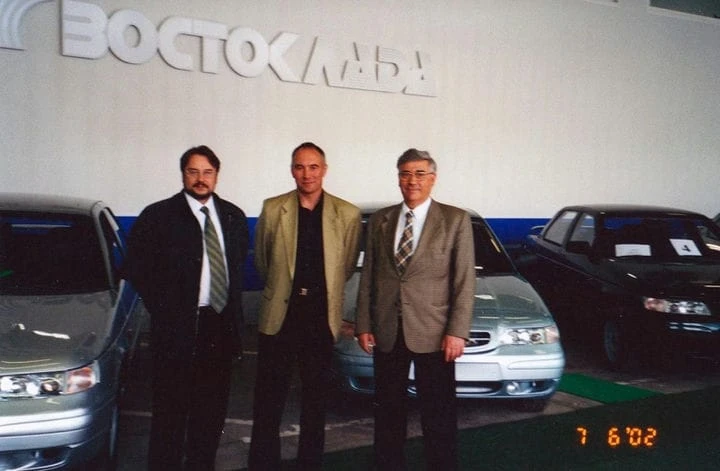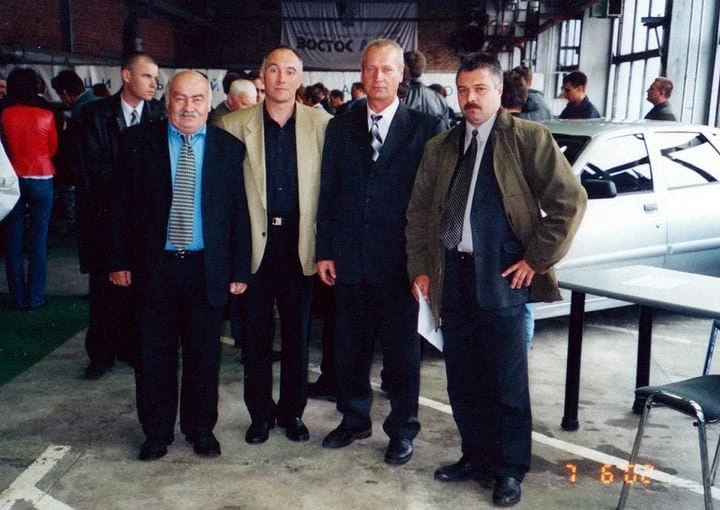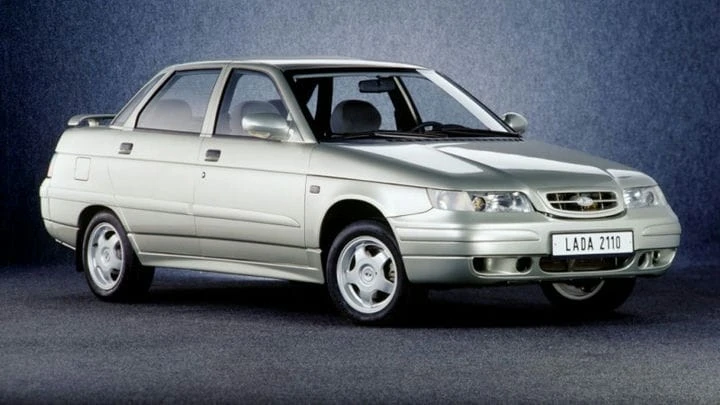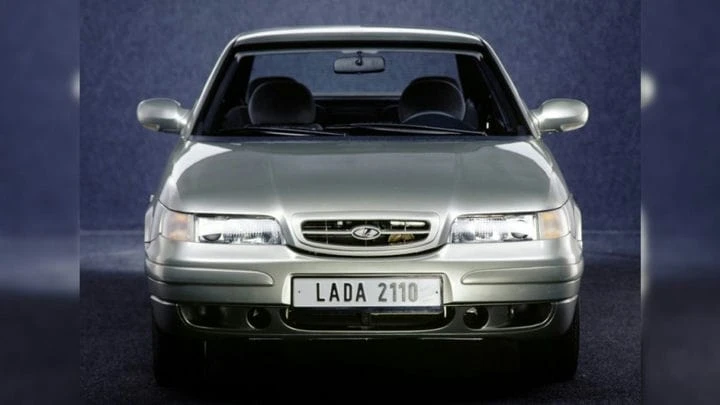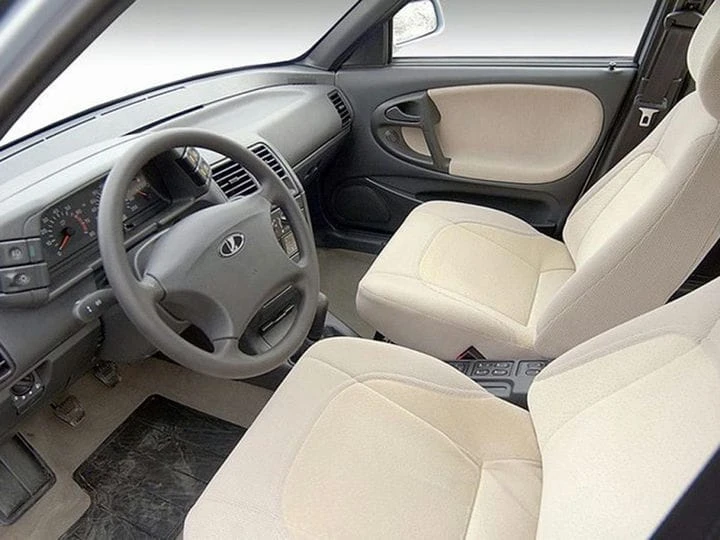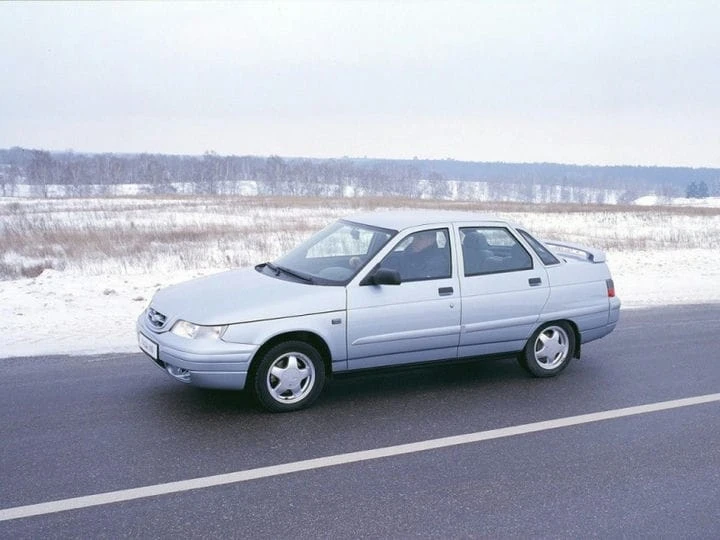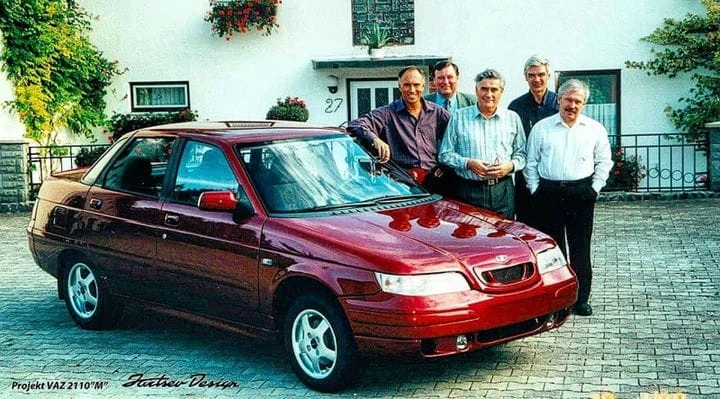Emka, but not BMW: how and why the VAZ-2110 received a Belgian restyling twice
Alteration of the car – a familiar and inevitable phenomenon. Indeed, during the life of a car, which is usually 7-8 years, most cars undergo at least one fairly large upgrade, and possibly several small ones, so to speak, to freshen up the touches, smooth out wrinkles and remove irrelevant details, adding a few fashionable accents. However, our current history goes beyond the usual pattern. Firstly, the cars of the “tenth” family, which we will talk about today, received a complete serial restyling only in 2007, when the successor to the “ten” Lada Priora appeared on the current market. Secondly, long before the abbot, the “pregnant antelope” really received an appearance upgrade, and not one, but two! Well, let's finish with the control fact that both options for modernizing the appearance of the VAZ-2110 were not developed by someone, and by Vladimir Yartsev himself, a very familiar VAZ designer, who is not unreasonably considered the author of the design of this model. More precisely, he led a group of VAZ designers who worked on the exterior and interior. And the most amazing thing in this story is not even that! After all, Yartsev at that time had not worked at VAZ for a long time and had not even lived recently, but nevertheless it was he who received the order for both the first and second versions of the factory “restyling”. Today we will remember how it was, how it ended and what NOLA is. And the most amazing thing in this story is not even that! After all, Yartsev had not worked at VAZ for a long time and had not even lived recently, but nevertheless it was he who received the order for both the first and second versions of the factory “restyling”. Today we will remember how it was, how it ended and what NOLA is. And the most amazing thing in this story is not even that! After all, Yartsev at that time had not worked at VAZ for a long time and had not even lived recently, but nevertheless it was he who received the order for both the first and second versions of the factory “restyling”. Today we will remember how it was, how it ended and what NOLA is.
Beginning: dashing nineties
As you know, the “ten” from Togliatti was born long and painfully, having lost their own “father” at the stage of plasticine models.
Landmark – this sketch of Yartsev can be considered the beginning of the “tenth” story in his understanding of front-wheel drive
Yartsev is close to the design of the hundredth series, which was subsequently abandoned in favor of a radically different concept. Notice how the front design is similar to the Samara-2!
Aerodynamics was one of the most important milestones of the new project. And unusual windows, and guards on wheels, and recessed door handles were “chopped” by technologists
After all, Vladimir Yartsev, whom we have repeatedly spoken about, by the will of fate in 1988 ended up in Belgium, where he has been living permanently from 1991 to the present. “Osirotev”, the future VAZ-2110, moreover, survived the Soviet state, finding itself in a zone of transitional turbulence for several years, as the fragments of the once huge country were in a fever during the transition from an administratively planned economy to a market economy. AvtoVAZ has also been hit hard by a series of transition problems: inflation, interrupted supply chains due to the collapse of the USSR, delays in deliveries of components and payment for shipped cars.
The look of the “ten” was finally formed in 1987, when the wooden model 2110 was aerodynamically tested at Porsche. Well, at the beginning of 1989, working samples were ready – prototypes of the 200th series, which in the period 1989-1990 were made in total for various work on the project, almost fifty copies. In fact, the “ten” visually took place even before the collapse of the USSR, and they planned to release it into mass production on July 1, 1992.
In 1987, the caterpillar was finalized in Germany and, whatever one may say, compared with the last Audi 80 of that time, against which the future “ten” seemed very worthy
The design of the 200 series still retained the 100-gram vents, mirrors on legs and an angular rear shackle.
The design of the 200 series still retained the 100-gram vents, mirrors on legs and an angular rear shackle.
The design of the 200 series still retained the 100-gram vents, mirrors on legs and an angular rear shackle.
The working prototype of the VAZ-2110 “lit up” during tests in the foreign and Soviet press back in 1990. Pay attention to the round rear arch and the “deaf” C-pillar
And then came August 1991 … “Swan Lake” on television put a bold cross on many Soviet “prospects”, but AvtoVAZ was still able to demonstrate the prototype “ten” at the end of 1992 at an exhibition organized by LogoVAZ in the Manege in Moscow.
The new model became a real star of the March issue of the magazine “Behind the wheel” in 1993
And then – silence. More precisely, a pause, although for the company itself the first half of the nineties cannot be called calm and quiet. The plant was busy surviving, and work on the design of a new model was practically not carried out; probably, the fact that Yartsev himself had already completely emigrated to Europe by that time had an effect. In 1992-1994, VAZ testers actively worked, testing the car in various climatic conditions, for which, with the help of aviation, prototypes were dropped in the Republic of Komi and the Magadan Region, Uchkuduk, the Kamchik Pass and at the automatic test site in Pskent. (Uzbekistan), and also conducted long-term tests at the Dmitrovsky training ground, where back in 1989, prototypes slipped about 80,000 km.
The pre-production prototype was shown to Boris Nikolaevich Yeltsin in 1993. The appearance of the car at that time was already completely formed.
The conditional release of the new model took place only on June 27, 1995 in the pilot production of AvtoVAZ, that is, not earlier than five years after the exterior of the car was ready. Alas, only one and a half hundred cars were produced in a year, and mass production in the same OPP began even later – in August 1996, and the first commercial copies went on sale only in November. Well, more or less large-scale production began in 1997, that is, the design of the VAZ-2110 at that time could look fresh and modern, except perhaps in comparison with the angular “chisel”, because he was ten years old! Also, many potential buyers did not like this “mixture of a barrel and a Saab”, especially since the first commercial vehicles were not far from pre-production samples, bristling with cracks and playing on all planes with unfitted body panels. Add to this too small “eight” wheels, the design of which did not fit at all with the round and plump body of the “pregnant antelope”, and the result was an original car with streamlined shapes, but rather controversial in appearance and obviously “not licked” at the level serial product. And how many copies in the media and discussions of ordinary motorists scattered about the “undermined” rear arches, because of which the sidewall visually seemed even harder and harder! but in some places quite controversial and clearly “not licked” at the level of a serial product. And how many copies in the media and discussions of ordinary motorists scattered about the “undermined” rear arches, because of which the sidewall visually seemed even harder and harder! but rather controversial in places and clearly “not licked” at the level of a serial product. And how many copies in the media and discussions of ordinary motorists scattered about the “undermined” rear arches, because of which the sidewall visually seemed even harder and harder! but rather controversial in places and clearly “not licked” at the level of a serial product. And how many copies in the media and discussions of ordinary motorists scattered about the “undermined” rear arches, because of which the sidewall visually seemed even harder and harder! but rather controversial in places and clearly “not licked” at the level of a serial product. And how many copies in the media and discussions of ordinary motorists scattered about the “undermined” rear arches, because of which the sidewall visually seemed even harder and harder! but rather controversial in places and clearly “not licked” at the level of a serial product. And how many copies in the media and discussions of ordinary motorists scattered about the “undermined” rear arches, because of which the sidewall visually seemed even harder and harder! but rather controversial in places and clearly “not licked” at the level of a serial product. And how many copies in the media and discussions of ordinary motorists scattered about the “undermined” rear arches, because of which the sidewall visually seemed even harder and harder! but rather controversial in places and clearly “not licked” at the level of a serial product. And how many copies in the media and discussions of ordinary motorists scattered about the “undermined” rear arches, because of which the sidewall visually seemed even harder and harder! but rather controversial in places and clearly “not licked” at the level of a serial product. And how many copies in the media and discussions of ordinary motorists scattered about the “undermined” rear arches, because of which the sidewall visually seemed even harder and harder!
This is not a trembling doe at all …
I MANAGED THE VAZ-2110 PROJECT AS A DESIGNER, BUT OTHER PARTICIPANTS IN THIS PROJECT: ALEXANDER PATRUSHEV, SERGEY CHAGIN – MAY BE ON THE LISTS FOR A LONG TIME. THERE IS A RESULT OF COLLECTIVE WORK. IF I JUST MADE THIS MACHINE, IT WOULD BE SOMETHING DIFFERENT. THENA WAS RELEASED LONG AFTER THE DEVELOPMENT PERIOD, BUT AT THAT THE TIME SEEMED VERY WORTHY, COMPLETELY EUROPEAN. From an interview with V. Yartsev, published on the Kolesa.ru website on 06/15/2018
In other words, just when the long-suffering car was finally launched into mass production, as in Togliatti, they were already seriously thinking about how to ennoble and modernize its design, as they say, “little blood”. And, most interestingly, they were going to produce an improved version of the sedan not on the main carrier, but in pilot production. Well, the icing on the cake in this whole story was another unusual fact – with the order for the development of the VAZ-2110 modernization project, the director of the VAZ OPP, Sergey Nikolaevich Perevezentsev, did not turn to the regular VAZ designers, but to Vladimir Anatolyevich Yartsev himself. However, it would be historically correct to start the history of “emka” (aka “teshka”) with another, and much less well-known, project of Yartsev.
Restyling No. 1 – NOLA
Before Vladimir Yartsev permanently moved to Belgium in March 1991, he worked from June to June 1988 to June 1990 for Scaldia Volga, which represented various Soviet vehicles in Europe for over 25 years. For two years, the chief designer of the 2110 project managed to create an “improved” modification of the Lada Carlota, a “hot hatch” Lada Samara RSi and a convertible, which later received its own name Natasha. In other words, Vladimir has accumulated a lot of experience in adapting the appearance of domestic frets to the exacting taste of a spoiled western buyer. Probably, this is what influenced in 1996 the decision of the director of the OPP, Sergei Perevezentsev, out of old friendship, to turn to the author of the “tenth” project, Vladimir Yartsev, with a request to create a tuning version of the car – that is, to go the same way as with Carlota, only this time based on her own creation. Recall: the official release of the “tens” took place in 1995, but at that time the cars were only assembled at the OPP in small batches using a bypass technology. However, Perevezentsev, together with two other Sergeys (Tatarinov and Ziborov), already saw the meaning of modernizing and ennobling the appearance of the “ten” by no means indisputable. And it is quite logical that it was decided to entrust the author of the design with a kind of “work on the mistakes” in 1995, but at that time the cars were assembled at the OPP only in small batches using bypass technology. However, Perevezentsev, together with two other Sergeys (Tatarinov and Ziborov), already saw the point in modernizing and ennobling the by no means indisputable appearance of the “ten”. And quite logically that it was decided to entrust the author of the design with a kind of “work on the mistakes” took place in 1995, but at that time the cars were assembled at the OPP only in small batches using bypass technology. However, Perevezentsev, together with two other Sergeys (Tatarinov and Ziborov), already saw the meaning of modernizing and ennobling the appearance of the “ten” by no means indisputable. And it is quite logical that it was decided to entrust the author of the design with a kind of “work on the bugs”.
From left to right: Sergei Tatarinov, Vladimir Yartsev, Sergei Ziborov
The first sketches were drawn in the shortest possible time. It was assumed that the car will receive a new aerodynamic body kit in the lower part of the body along its perimeter, the original radiator grille, moldings and, of course, expressive alloy wheels instead of eight pieces of iron. First, Yartsev developed a version of improvements for a sedan, but after a couple of weeks, sketches for a station wagon were also ready, yes, in the plural, since there were two options.
“Second edition, improved and supplemented”
“Second edition, improved and supplemented”
“Second edition, improved and supplemented”
Then, on a sedan made in the OPP, Vladimir made prototypes and molded original parts from plasticine, which were supposed to turn an ordinary VAZ-2110 into a more elegant and “pro-Western” car. The equipment for the production of components was taken over by the Bavarian company Miedl Design, and the entire new “link” was manufactured by the German company PICHLER, the same one that produced body kits for Lada Carlota.
On the eve of Nola: Sergey Tatarinov and Sergey Ziborov (AvtoVAZ), Edmund Pichler (owner of Pichler) and Werner Novara, a longtime partner of Yartsev
Pay attention to the “tens” wheels that Yartsev turned into Nola: the front is a cast Charlotte RW, and the rear is stamped “Zhiguli” with a chrome cap
Sleight of hand, duct tape, and a bit of magic are the ingredients to spruce up the look of the antelope.
A little about the timing: if the design of the project began at the end of April, then in June-July Yartsev was engaged in “artistic modeling”, bringing the forms of plasticine parts to the required state.
And already in the middle of the summer of 1996, the first version of Nola was ready. Thanks to minimal intervention in the body structure, the car retained its recognizable appearance, but at the same time became more attractive. So, the radiator grille received a complex and expressive plastic (it cannot be compared with a flat “plank” of the factory version!), The same theme was supported by a carefully designed lower part of the front bumper and horizontal moldings around the perimeter. The body was supposed to visually make the car lower and smoother, dividing the heavy sidewall into two parts. Of course, a neat spoiler appeared on the trunk lid, without which not a single creation of Yartsev based on a front-wheel drive VAZ could do.
Already in September, Pichler's specialists began to “bake” the original bumpers, grille and spoiler; that is, the whole project took several months thanks to the enthusiasm of Yartsev and his long-standing “connections” in the circles necessary for production.
Ludwig Midl, although he was the founder and owner of Miedl Design, did the fine-tuning of the body kit for Nola with his own hands!
Thermoformer Ernest Pichler was the brother of the owner of the company!
Radiator grilles, as well as alloy wheels – the favorite “horse” of Vladimir Yartsev
Edmund Pichler and Vladimir Yartsev at the future Nola. At that time, the former VAZ designer collaborated with Pichler for almost 10 years.
Where Does The Last Name Nola Come From? According to Vladimir Anatolyevich, “H”, “O” and “L” are nothing but the first letters of the female names Natalya, Oksana and Lyudmila (as the creators of the project called the other halves). Well, the last “A” was added so that the abbreviation was harmonious.
From left to right: Lyudmila, Natalya and Oksana, from the first letters of whose names the name of the project comes from
According to reports, the Germans produced 1100 NOLA body kits for the VAZ, a hundred of which went not to Tolyatti, but to Bulgaria. Most of the “tuned” cars were made on the basis of a sedan, there were much fewer station wagons (however, this is not surprising, given the difference in production volumes!), And just a few copies of hatchbacks with the NOLA prefix.
Restyling No. 2 – NOLA-2, aka VAZ-2110M
Even after the release of the small-scale Nola, the idea of modernizing the VAZ-2110 in Tolyatti was still in the air, as they say. And I had the opportunity to implement it internally for an unexpected reason: since all the documentation for the “top ten” was done manually, without computer design, then for any more or less serious facelift it was necessary to analyze all the drawings and details, and then achieve its similarity with mathematical models. There was another option – to redo both the seals and the welding equipment according to the mat model, and then check everything when assembling the body. After all, this great work was meaningless without modernizing the appearance of the car, which by the end of the nineties, if not outdated, then no longer gave the impression of a new development.
There was no clearly defined technical task. Initially, the designers were allowed to change only the bumper and the radiator grill, that is, to do something like Yartsev did on the Zero. A little later, a hood and headlights were added to the list of new parts, which significantly freed the hands of the design teams. That's right, for groups, because the Priore series was preceded by as many as six (!) Different options for upgrading the appearance. The first version belonged to V. Stepanov, the second to S. Taranov, the third to E. Lobanov, the fourth, which received the Niva VAZ-2123 optics, was made by V. Semushkin. Subsequently, several prototypes of such a machine were even made.
V. Semushkin's variant received a different optics, which changed the “facial expression” of the car to a bewildered-surprised expression
But there was a fifth! It was Sergei Nikolaevich Perevezentsev who ordered the delivery of a new cherry “ten” last from Togliatti to Vladimir Yartsev in early August. Then, literally in a matter of weeks, as they say, in one fell swoop, Vladimir created a new version of the appearance of the VAZ-2110, which received the symbol NOLA-2.
THIS WAS ONE OF THE FASTEST PROJECTS I HAD TO PERFORM: ON AUGUST 3, 2000 I RECEIVED A CHERRY TENA FROM TOGLIATTI AND ON AUGUST 25 THE PLATE STRUCTURE WAS COMPLETELY READY. IN MY OPINION IT WAS NORMAL AND TOTALLY SUCCESSFUL, BUT I REMEMBER MORE ABOUT THE EVENTS THAT HAPPENED AT PARALLEL: THIS IS CALLED THE CREATIVE ENVIRONMENT WHICH OUR RUSSIAN DEVELOPERS ARE OFTEN MISSED. Vladimir Yartsev for Kolesa.ru, 03/07/2022
Recall that ABS plastic accessories for Lada Nola were produced in Germany by Pichler. However, the operation of cars with a body kit in many conditions showed that bumpers and sills turned out to be too fragile at low temperatures, and at the same time, they practically could not be restored after damage, as they were destroyed. This is how the idea of creating a new version of the Nol and the subsequent production of body kit elements from impact-resistant elements appeared recently.
Vladimir Anatolyevich began to create prototypes on the same day he received the car. As Yartsev himself recalls: “Having put on Nolovsky bumpers, together with my eldest son Roman, I started modeling. I meant to say “started working”, but the pleasure of knowing that you want to improve your creation does not allow you to use this word.
The usual “one hundred and third” in the capable hands of Vladimir was the VAZ-2110M
In the process: it is clear that the “emka” should have had a “nosy” hood, a new wing articulation angle with a turn signal, as well as bulging wheel arches
The amount of orange indicates how much more extensive the changes were at the front than at the back.
To assess the appearance of the plasticine model, Vladimir Anatolyevich used full-size printouts of rims, covering the standard stamping with them!
In early September 2000, Ludwig Midl, who previously worked for Pichler, came to Belgium from Bavaria, and in 1994 he founded his own company, renting a room near … a chicken coop. It was he who went to work “out of old memory”, and only then Vladimir went with Ludwig to Bavaria and helped him remove the molds for making a prototype.
Further work was carried out by the contractor partners without the active intervention of Yartsev, who was on vacation in Spain. When he returned, he simply did not recognize his offspring, so “Nola the Second”, according to Yartsev himself, was transformed for the better.
Like other elements of the body kit, the front fenders were not made of metal at all.
Nola-2, better known as VAZ-2110M. Later, the grille design was simplified by placing the emblem in the center. Pay attention to the nifty spoiler that was not in the production version
Like last time, the headlights remained intact, but the hood, although it retained a horizontal connection with the front fenders, became different. You can draw an analogy with the long-winged Samara, but the hood cover not only received an “elongated nose”, but also began to reach the front bumper, “protecting” the radiator grill built into the hood. Such a decision, however, is not new and, for example, was typical for Mercedes, BMW or Audi cars of the 1990s …
BOTH THE FIRST NOLA AND THE VAZ-2110M WERE DEVELOPED IN A BELGIAN STUDY; THIS APPLIES TO BOTH PROJECT AND TECHNICAL DOCUMENTATION. COMPONENTS WERE MANUFACTURED IN EUROPE AND SUPPLIED IN TOGLIATTI TO AVTOVAZ OPZ. WHEN LOOKING AT THE PROTOTYPES, AUDI STAFF WAS SIMPLY AMAZED BY HOW THE CAR HAS BEEN TRANSFORMED, HOW INTERESTING AND PRESENTATIVE IT BEGAN TO LOOK THANKS TO SOME RECORDS, LIKE NEW BUMPERS AND MOLDINGS. HOWEVER, THE CASE WAS ALSO IN THE MINIMAL AND EQUAL SPACE BETWEEN THE PARTS, AND ALSO IN THE SUCCESSFUL COLORING, IN THE SAME SERIAL VAZ-2110 PRODUCED SUCH IMPRESSION, AS IF CARLY WAS RESTORED AFTER THE RTA by Vladimir Yartsev for Kolesa.ru, 02.03.ru, 02.03.
Already on September 30, a delegation of “customer-recipients”, as Vladimir aptly called them, flew to Germany. These were S. Perevezentsev, V. Kozenkov, L. Aganin and S. Ziborov. The new project was accepted without comment, and subsequently it was he who was produced at the OPP, and not the previous four, created by the current VAZ designers.
Middle and his team on the eve of showing the car to the customer representatives
Representatives of the plant were satisfied with the “branded” appearance. Apparently, this is why the version of Yartsev got into the series
Representatives of the plant were satisfied with the “branded” appearance. Apparently, this is why the version of Yartsev got into the series
Representatives of the plant were satisfied with the “branded” appearance. Apparently, this is why the version of Yartsev got into the series
Thus, only 11 months passed from the idea to the presentation of this car at the current motor show – an unprecedented period by our standards – and a year after the premiere, small-scale production of a dozen modernized at the OPP began.
In the photo: the first serial copies of the VAZ-2110M
By the way, at the presentation of a production car in Togliatti, which took place on July 6, 2002, Vladimir Yartsev unexpectedly received an invitation from Sergei Perevezentsev, who at that time had arrived in his homeland, the city of Zhigulevsk. For Vladimir Anatolyevich himself, a kind of “icing on the cake” on this trip was a meeting with his best friend and co-author of the 10th family, Alexander Patrushev.
In the photo: Vladimir Yartsev, chief designer of VAZ Evgeny Lobanov and Valery Kozenkov, chief designer of heating elements
In the photo: Evgeny Lobanov, Vladimir Yartsev and Sergey Perevezentsev – director of the OPP VAZ
In the photo: Petr Mikhailovich Prusov, Vladimir Yartsev, Evgeny Zharavin and Konstantin Bezlepkin (Yartsev's classmates at TPI).
And now let's try to dot the i in the designation of the car. The name Nola-2 did not catch on and did not particularly appear on the current market. Instead, the car was timidly called first VAZ-2110M (modernized), then VAZ-2110T, where the letter “T” meant “tuning”. The official index of the model was a digital abracadabra, also stamped on the nameplate under the hood: VAZ-21103-10/03.
“Emka” received a new factory index, but, like the usual “ten”, remained nameless
“Emka” received a new factory index, but, like the usual “ten”, remained nameless
“Emka” received a new factory index, but, like the usual “ten”, remained nameless
“Emka” received a new factory index, but, like the usual “ten”, remained nameless
“Emka” received a new factory index, but, like the usual “ten”, remained nameless
From the usual “tens” this “emka” outwardly differed in a new hood, front fenders with embossed wheel arches instead of the previous flat ones, bumpers, door sills, elongated lenses of the front turn signals, side moldings and a rear spoiler. Changes have also been made to the interior, such as a new instrument panel trim and original door upholstery, as well as seat upholstery.
The interior has also been redesigned a bit and the dashboard has been given a sleeker top (not shown yet)
It was planned that OPP would supply the hood and fenders to the SKP, where a “black” body would be manufactured, which would then be painted and partially assembled on the main conveyor, after which it would be delivered by road carriers to the OPP site for further assembly and assembly.
In the autumn of 2001, the plant estimated the standard “one hundred and third” (that is, the VAZ-2110 with a 16-valve engine) at 160,000 conventional units, and the “emka” collected by the OPP in Tolyatti is asked for 173,000 conventional units. Thus, the difference was about $ 440 according to the exchange rate of that time, however, in car dealerships, cars already cost 6,000 and 6,700 dollars, respectively, and in some car dealerships the difference reached a thousand dollars! However, those who wanted to buy “factory tuning” went, for example, to the Lada-Favorit Moscow car dealership at that time, the first four VAZ-2110Ms were sold in just two days.
VAZ-2110M appeared on the November cover of the magazine “Behind the wheel”, on the pages of which the topic of “emki” was raised several times. Surprisingly, on the eve of “Priora” in 2002, V. Semushkin's version also appeared on the cover and pages of the September issue, which, unlike “Emka”, did not have time to become serial
And how many “emoks” did the OPP manage to produce? Unfortunately, there is no exact number. It is only known that the plan for September 2001 was 58 cars, in 2002 they planned to make (and did!) About 1000 emoks, and in 2003 about 200-250 modernized cars were produced monthly. Most likely, out of 1,872,600 sedans, station wagons and hatchbacks of this family, produced over 12 years, since 2001, at least 5,000 and no more than 10,000 copies have been manufactured at the OPP.
In the photo: VAZ-2110M series. Vladimir Yartsev always paid a lot of attention to the wheels, but in the commodity “emki” at best there were “dozens” of alloy wheels”
Officially, the VAZ-2110T was produced as a base ten until 2007, when this model was replaced by Lada Priora, also a product of a deep modernization of the tenth family. However, this is a completely different story, which we also tell.

